No products in the cart.

1. Introduction:
American farming is undergoing a high-tech transformation, driven by one of the most powerful forces of the digital age: artificial intelligence (AI). With traditional agriculture facing pressing challenges, such as climate change, labor shortages, unpredictable weather, and resource inefficiencies, farmers across the United States are turning to AI tools to stay productive and sustainable.
The promise of AI in agriculture is not science fiction. From predictive analytics and machine learning in crop management to smart irrigation and autonomous machinery, AI technologies are reshaping how crops are grown, monitored, and harvested. According to a recent USDA report, more than 60% of large-scale farms in the U.S. are adopting AI-powered farming technologies, making it a growing reality on American soil.
This shift is not just about boosting yields; it’s about building resilience. With AI tools like satellite imaging, agricultural drones, and precision farming platforms, even small and mid-sized farmers can make data-driven decisions that lead to healthier crops and higher profits.
This article explores how AI is revolutionizing American agriculture and what the future holds for this rapidly evolving landscape. We’ll break down the benefits, tools, real-world applications, and what it all means for the farmers of tomorrow.
2. The Core Benefits of AI in U.S. Agriculture
Artificial intelligence is unlocking new levels of efficiency and precision in American agriculture, transforming how farmers manage everything from planting schedules to pest control. The core benefits of AI in farming can be grouped into three main areas: yield optimization, resource efficiency, and crop health monitoring.
One of the most powerful applications of AI is predictive analytics for crop yield optimization. By analyzing historical weather patterns, soil conditions, and satellite data, AI algorithms can forecast the best times to plant and harvest. This reduces guesswork and helps farmers maximize productivity with less waste.
Another major benefit lies in smart irrigation systems. Traditional watering methods often lead to overuse or underuse of water, two costly mistakes in modern farming. AI-driven precision irrigation systems monitor real-time soil moisture levels and apply water only when and where it’s needed, improving water efficiency by up to 30%.
When it comes to crop protection, AI vision tools and agricultural drones play a critical role. These technologies detect early signs of plant stress, disease, or pest infestation, long before they become visible to the human eye. By pinpointing problems early, farmers can take targeted actions, reducing the need for chemical treatments and preserving crop health.
Ultimately, the integration of AI into these core areas supports a more sustainable farming model. It’s not just about growing more, it’s about growing smarter.

3. AI Tools Transforming the Farm Landscape
AI is no longer a futuristic concept for American agriculture, it’s a toolkit farmers are already using. From autonomous tractors to smart sensors and AI-powered platforms, these technologies are transforming how farms operate, manage data, and make decisions.
One of the most impactful tools is AI-driven machinery, such as autonomous tractors and robotic harvesters. These machines can plant, fertilize, and harvest crops with minimal human input, saving time and labor while increasing accuracy. They’re especially valuable in regions facing severe labor shortages.
Equally game-changing are smart sensors deployed across fields. These devices collect real-time data on soil health, moisture levels, crop growth stages, and even microclimatic changes. When connected to farm management platforms, they provide a full digital overview of farm operations. Farmers can access these insights through mobile apps or web dashboards, allowing them to act quickly and precisely.
Another powerful tool is satellite monitoring, often used in tandem with agricultural drones. These aerial tools capture high-resolution imagery that AI algorithms analyze for signs of stress, pest outbreaks, or nutrient deficiencies. This enables targeted intervention, saving both resources and crops.
Together, these tools form the foundation of precision agriculture, enabling smarter decisions and better outcomes. What once took days of manual observation can now be done in real time, at scale.
4. Regional Case Studies in the U.S.
Across the United States, AI adoption in agriculture varies by region, shaped by crop types, climate, and access to technology. These real-world examples highlight how American farmers are applying AI to tackle region-specific challenges and boost efficiency.
In California’s Central Valley, a region known for fruit and nut production, AI-powered drone surveillance and crop monitoring software are helping farmers detect irrigation issues and nutrient deficiencies early. With water scarcity a pressing concern, smart irrigation systems have improved water use by up to 35%, making farming more sustainable in this drought-prone area.
In the Midwest Corn Belt, large-scale grain producers are leveraging machine learning models to enhance planting strategies and forecast yields. Tools like AI-based yield prediction help farmers determine optimal planting dates and seed selection based on real-time soil and weather data. These insights improve productivity while minimizing resource waste.
Further east, in West Lafayette, Indiana, local farms are experimenting with AI and smart sensors to support precision fertilization and disease detection. The integration of AI into traditional farming practices has led to measurable increases in crop health and yield quality, even on smaller farms.
These regional case studies demonstrate that AI in agriculture isn’t a one-size-fits-all solution. Instead, it’s a flexible, data-driven approach tailored to diverse farming environments across the U.S.

5. Future Outlook and Challenges
The future of American farming is deeply intertwined with the evolution of artificial intelligence. As technology advances, so does the potential for AI-driven agriculture to address some of the industry’s most pressing challenges, ranging from food security and climate change to economic sustainability.
Looking ahead, predictive modeling, AI-enhanced robotics, and automated decision-making tools are expected to become more accessible, even for small- and mid-sized farms. With the rise of edge computing and IoT integration, farmers will be able to process vast datasets on-site, making real-time decisions without relying on external servers. This means more responsive and autonomous farms that can adapt to changing conditions instantly.
However, the road to fully integrated AI in agriculture isn’t without hurdles. Data privacy, high implementation costs, and a lack of digital literacy in some rural areas pose significant barriers. Additionally, the agriculture sector must confront concerns over job displacement, as AI tools automate traditionally manual tasks.
Policymakers, tech companies, and farmers must collaborate to ensure ethical, equitable deployment of AI technologies. Government-backed training programs and funding initiatives can play a crucial role in bridging the digital divide, allowing all U.S. farmers to benefit from the smart farming revolution.
Ultimately, the promise of AI in agriculture isn’t just about machines, it’s about empowering farmers with intelligent tools that support sustainable, profitable, and resilient farming systems.
6. Conclusion and Call to Action
As we’ve explored, artificial intelligence is transforming American agriculture, making farming more efficient, sustainable, and data-driven. From AI-powered machinery and precision agriculture tools to real-time crop monitoring and smart irrigation, the technology is driving significant changes that benefit both large-scale operations and smaller, family-owned farms alike.
The future of farming is bright with AI, offering solutions to some of the most urgent challenges facing agriculture today, such as resource scarcity, climate change, and labor shortages. However, achieving widespread adoption of AI technologies will require overcoming hurdles like high costs, data privacy concerns, and the need for digital literacy in rural communities.
Farmers, tech developers, and policymakers must come together to create an ecosystem that supports AI adoption while ensuring that all farmers have access to the tools and knowledge they need. Through training programs, financial incentives, and continued technological innovation, we can pave the way for a smarter, more sustainable future for American agriculture.
If you’re a farmer looking to embrace AI, the time to act is now. Whether you’re starting small with smart sensors or taking the leap with autonomous tractors, the potential to enhance your farm’s productivity and sustainability is limitless. Don’t wait for the future, transform your farm today with AI.
FAQs:
Q1. How is AI improving farming practices in the United States?
AI is transforming U.S. farming by enabling precision agriculture, improving crop monitoring, optimizing irrigation, and enhancing decision-making processes. AI-powered tools, like smart sensors and autonomous machinery, help farmers increase yield, reduce resource waste, and respond to environmental challenges more efficiently.
Q2. What are the main benefits of using AI in farming?
The key benefits of AI in farming include increased productivity, better resource management, and enhanced crop health monitoring. AI systems enable farmers to predict crop yields, optimize irrigation, and detect diseases early, which leads to more sustainable farming practices and higher profit margins.
Q3. Are small farmers in the U.S. adopting AI technologies?
Yes, small farmers are increasingly adopting AI technologies to enhance their farming operations. Tools like precision irrigation systems, crop management software, and smart sensors are now more accessible, allowing smaller farms to benefit from data-driven insights and improve productivity while reducing costs.
Q4. What are the challenges associated with AI adoption in farming?
Some challenges include the high initial cost of AI tools, data privacy concerns, and the need for digital literacy in rural areas. Additionally, there are worries about job displacement due to automation, and the agriculture sector must address these concerns while promoting responsible AI usage.
Q5. What does the future hold for AI in American agriculture?
The future of AI in agriculture looks promising, with continued innovations in robotics, predictive analytics, and automated farming systems. As technology becomes more affordable and accessible, AI will enable farms to become more efficient, sustainable, and resilient, helping them adapt to challenges like climate change and resource scarcity.
Related Articles
Farm Automation
How AI Is Helping Organic Farmers Stay Competitive
1. Introduction: Organic farming has always been admired for its sustainability, purity,...
Farm Automation
AI Farm Assistants: Are Virtual Advisors the Future of Agriculture
1. Introduction: Imagine having a personal farm assistant who never sleeps, analyzes...
Farm Automation
How U.S. Farmers Use AI to Monitor Weather and Make Better Decisions
1. Introduction: For generations, U.S. farmers have relied on intuition and traditional...
Farm Automation
Can AI Replace Manual Labor on U.S. Farms? Here’s What to Know
1. Introduction: Imagine a cornfield in Iowa where machines handle everything from...
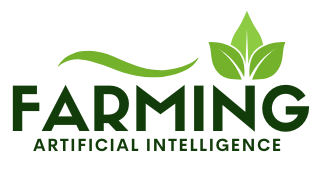


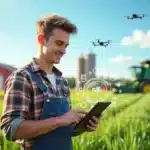

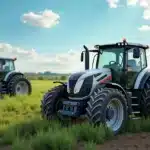



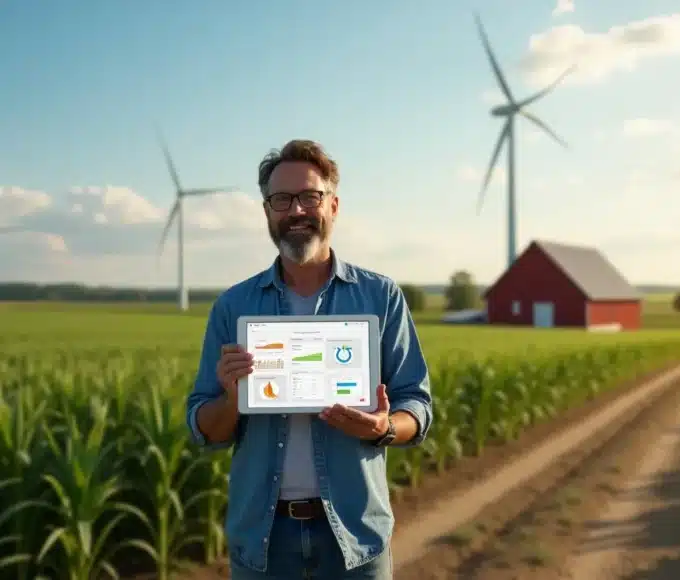
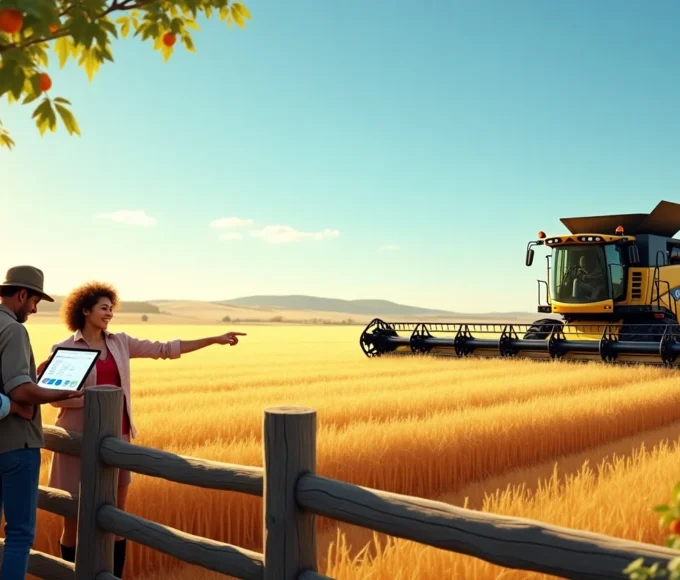
Leave a comment